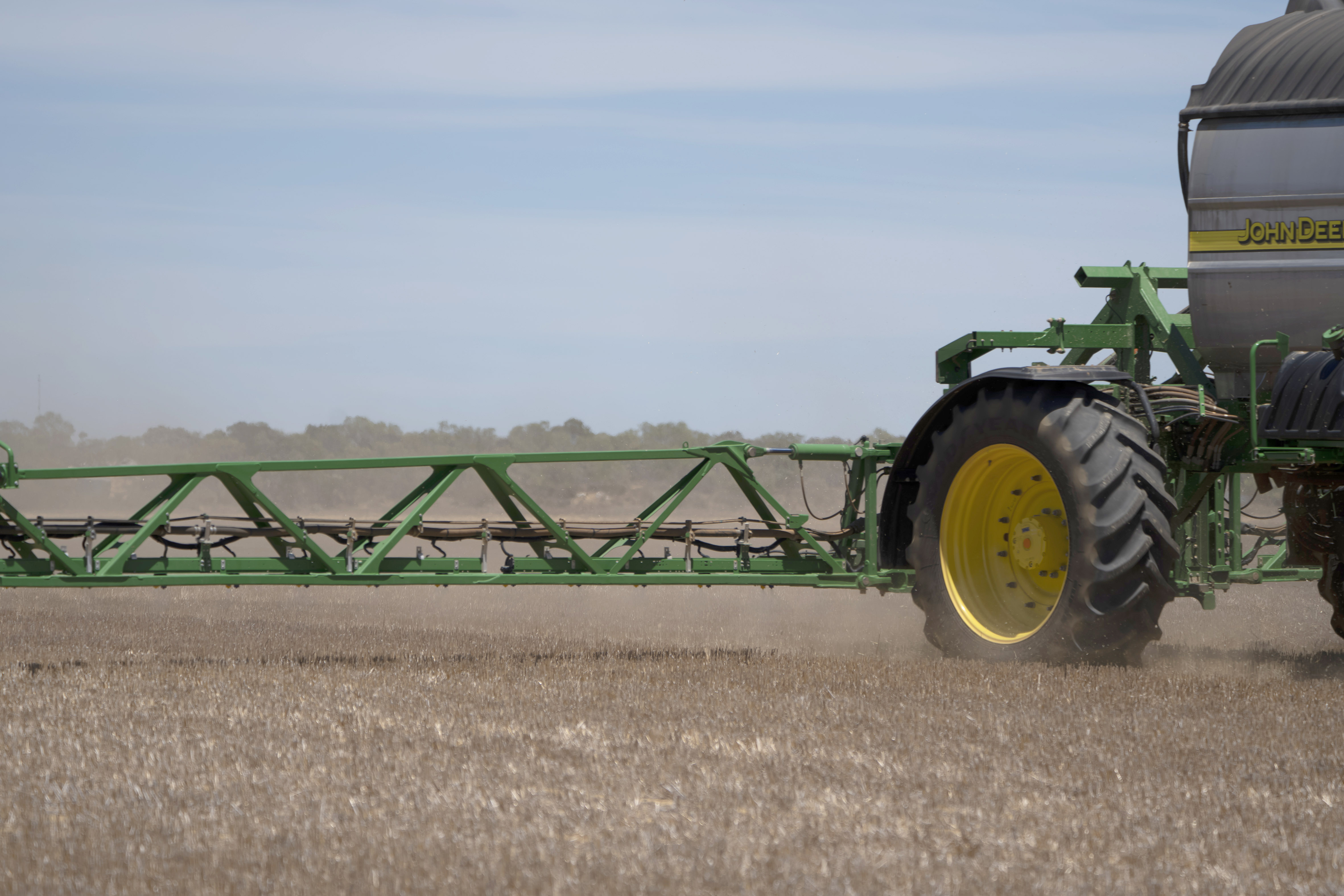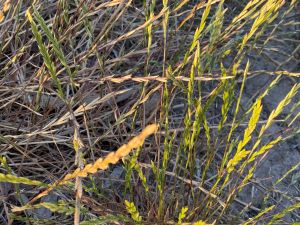Paddock Practices: Vigilant early weed management encouraged
Date: 19 Mar 2021
With widespread, although variable rainfall across the Western Australian grainbelt this summer and into March, growers keen to preserve useful summer rainfall will need to act quickly on weed management in autumn.
Andrew Storrie, of AGRONOMO, who is leading a GRDC summer weed survey in the WA grainbelt, has observed that seasonal conditions have allowed for a greater diversity of species to emerge this season, including some early flushes of annual ryegrass, brome grass, barley grass and capeweed – particularly in southern cropping areas.
Weed management is estimated to cost Australia’s grain growers $3.3 billion every year (or $146 per hectare) in control costs and lost revenue. Accurate weed identification is the first step in ensuring correct management decision are made in a timely and cost-effective manner. The GRDC’s Common Weeds of Grain Cropping Ute Guide is a national publication that assists weed species identification to guide control methods.
The most common control methods utilise chemical tools including pre-emergent and post-emergent herbicides (although evolving resistance means growers should not rely on chemical strategies alone). There are a number of key factors dictating herbicide performance and considerations around what can be done in the paddock to ensure weed control is maximised.

Herbicides and the double knock
Department of Primary Industry and Regional Development research officer Dr Catherine Borger says glyphosate (Group M) is the most important herbicide for controlling weeds in the lead up to sowing. However, several common species have evolved resistance to this herbicide and certain environmental factors can reduce glyphosate performance.
The GRDC Grains Research Updates paper by the University of Adelaide’s Peter Boutsalis and Chris Preston, as well as Charles Sturt University’s John Broster, outlines some tips for optimising glyphosate performance.
- Avoid applying glyphosate under hot, dry conditions
- Improve water quality and glyphosate activity by using ammonium sulfate (AMS)
- Time application for the early seedling growth stage
- Use a double knock
A double knock strategy is a good option for summer and early autumn weed control, especially for hard-to-kill weeds.
The double knockdown – or double knock – is a sequential application of two different control tactics within a relatively short period. It usually involves glyphosate followed by paraquat, paraquat/diquat or glyphosate plus an effective alternative herbicide at full label rate in the first application and a robust rate of paraquat in the second application.
Glyphosate resistance is common across the western region and other weed control options are required. Growers are encouraged to include 2,4-D amine and paraquat in their chemical control strategies. For all chemical use, it is important to adhere to chemical labels and minor use permits. If Group A chemicals are used in the fallow, a double knock must follow to control surviving weeds.
Pre-emergent herbicides
Resistance to many post-emergent herbicides has developed to the stage where many growers are now reliant on pre-emergent herbicides as the foundation of chemical control programs, particularly for annual ryegrass.
Application of pre-emergent herbicides is targeted at the soil surface, with incorporation by sowing moving the herbicide into the soil profile, where it is then available for uptake via weed seeds. Many factors influence how herbicides enter the soil and what happens once they are in the soil, which impacts how effective they are at managing weed burdens.
A GRDC Grains Research Updates paper, by Independent Consultants Australia Network’s Mark Congreve, outlines pre-emergent herbicide availability, selectivity and persistence, helping growers to predict pre-emergent behaviour and optimise weed control in their farming system.
Take home messages for growers include:
- Chemical properties will dictate herbicide behaviour, influencing the:
- Persistence and mobility
- Photolysis (chemical process by which molecules are broken down into smaller units through the absorption of light) and volatility
- Solubility
- Binding co-efficient
- Half-life
- Know your soil type (soil texture, pH, any hardpans or changes at depth)
- Seeder set-up is very important to minimise seed and herbicide contact
- Understand the role of soil microbes
- Develop a plan that doesn’t rely on any single pre-emergent herbicide.
Alternate control tactics

Evolving herbicide resistance issues mean growers can no longer rely on chemical strategies alone. To assist industry and growers to understand the incidence and distribution of herbicide resistance in the grain sector, the GRDC supports random surveying of weeds in cropping paddocks. Surveys in Western Australia in 2015 highlight the following as key weed species with herbicide resistance issues:
- Annual ryegrass (Lolium rigidum)
- Wild radish (Raphanus raphanistrum)
- Brome grass (Bromus spp.)
- Barley grass (Hordeum spp.)
- Wild oats (Avena spp.)
Growers are encouraged to ensure non-chemical tools are included as a part of wider integrated weed management efforts. Increasing crop competition (via higher seeding rates, narrow row spacing or by timing sowing to suppress weed seed growth) is a popular non-chemical control tactic. The WeedSmart Big 6 details six strategies to consider when planning weed control, including longer term options such as crop and pasture rotation and harvest weed seed control.
Delaying crop sowing can be another early season tactic for paddocks with high weed counts as it allows more time for weed germination and chemical control prior to sowing. However, this can have negative outcomes for crop growth and quality if sowing is left too late, and in some situations has selected for more dormant weed populations which delay their germination to avoid knockdown herbicides.
Useful resources:
More information on early season weed management is available by the GRDC-supported WeedSmart resource centre.
GRDC’s Common Weeds of Grain Cropping Ute Guide
GRDC - Causes of poor ryegrass results and paraquat and glyphosate resistance – 2020 season
GRDC Pre-emergent herbicides Fact Sheet
GRDC YouTube – Pre-emergent Herbicides – Part 1: Solubility and Binding
GRDC YouTube – Pre-emergent Herbicides – Part 2: Incorporation by sowing
Department of Primary Industries and Development – Controlling small weeds
Was this page helpful?
YOUR FEEDBACK
